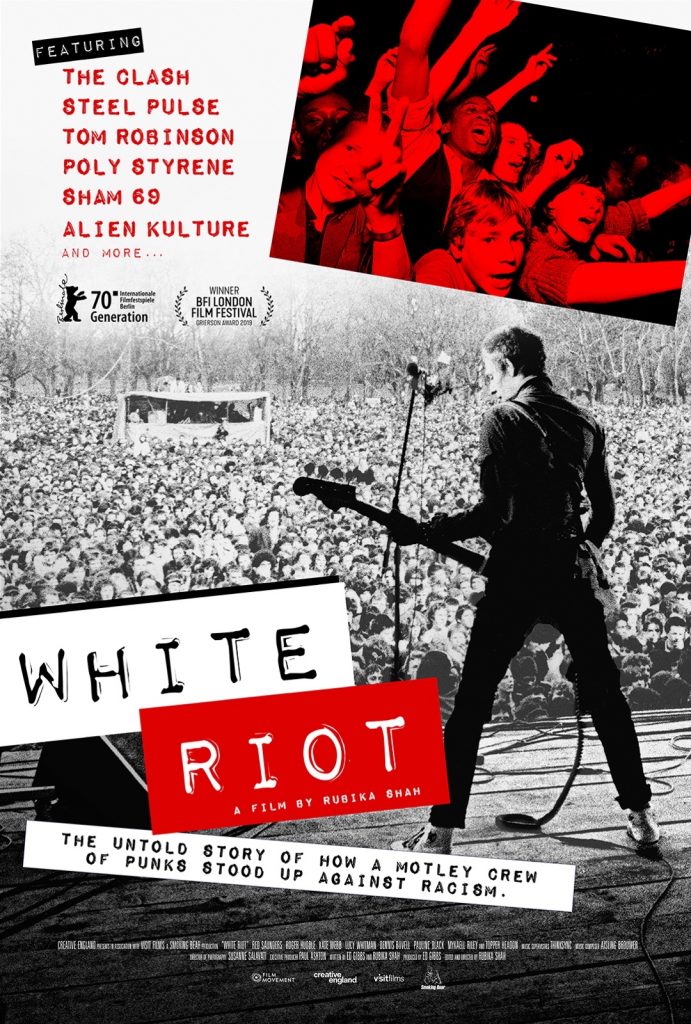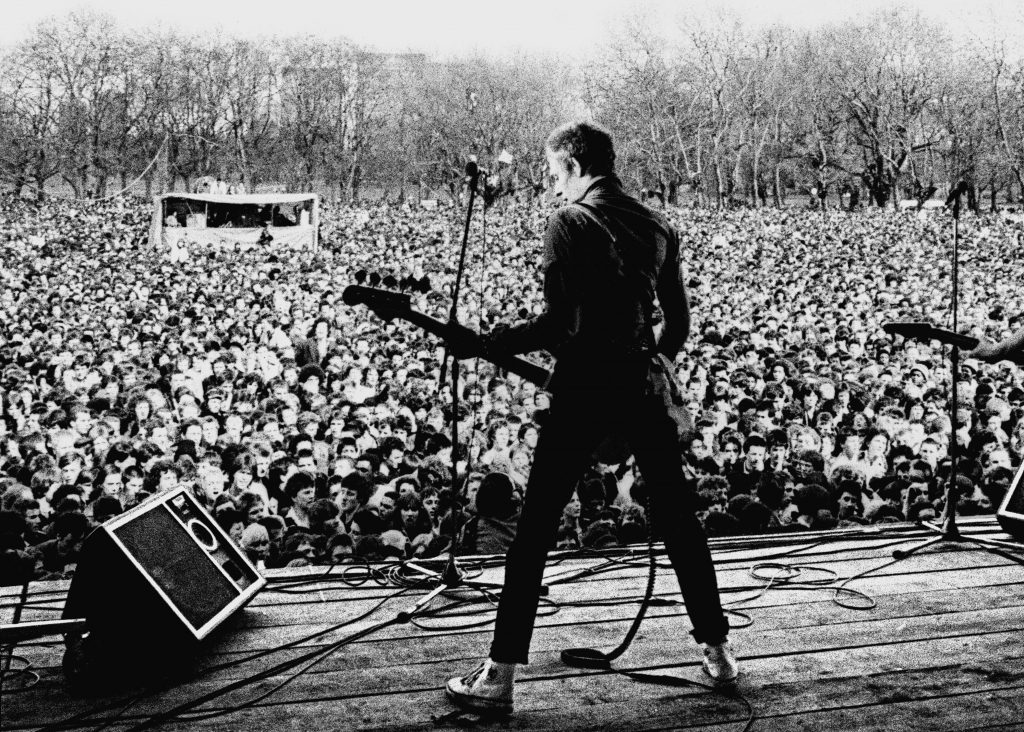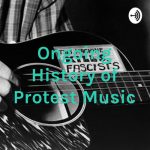
A large number of young people joining together to protest against a wave of fascism and racism. You might assume I’m talking about what is going on right now in the United States, and I very well could be. But I’m referring to the rise of The United Front, a white nationalist political party which rose in popularity in the UK back in the late 1970s.
This is the backdrop of White Riot, a documentary film by Rubika Shah. Shah skillfully explores how a grassroots movement sprouted up to combat the anti-immigrant sentiment that was starting to take root. It also chronicles how music played an integral role in that fight.
Part of the catalyst of the anti-racism movement was racist comments made by Eric Clapton, who expressed his support for comments made by Enoch Powell, a politician who supported a xenophobic agenda. Disgusted by Clapton’s views, music photographer Red Saunders pens a letter to the music press where he calls out Clapton as “music’s biggest colonialist”, highlighting the comments are even more reprehensible in the light of the debt that Clapton owes to black artists. Saunders pleads for rock music to take a stand against racism. NME, Melody Maker, and Sounds all publish the letter. The response to the letter opens the way for the formation of Rock Against Racism (RAR) in 1976.
A dedicated group of individuals starts a zine entitled Temporary Hoarding which covers stories that mainstream media ignore, such as immigration, the Catholic side of the Northern Ireland conflict, and the police’s controversial “suspected persons” powers. It is a fascinating look at an underground scene that was able to successfully bring people together pre-social media.

Another aspect of the documentary that stood out is the relevancy. For example, you had the police’s “suspected person” powers where they could randomly arrest people for looking suspicious (code for not looking white). The film also shows evidence of the police openly supporting The National Front and was known to resort to brutality during anti-racism protest. Does that sound familiar?
The other important takeaway from the film is the power of music. It effectively uses archival footage to showcase artists such as Steel Pulse, X-Ray Spex, Tom Robinson, Sham 69, and The Clash. Along, with well-known reggae and punk artists, it also highlights lesser-known bands like Alien Kulture, who were made up of second-generation Asian immigrants, who sadly only released one single and broke up after only playing 30 shows.
The featuring of Sham 69 was also interesting because a significant portion of the band’s fan base was Nazi skinheads who shared the views of The National Front. So the band had to risk potential backlash to support the movement. The film does effectively highlight the challenges faced by the band and the concerns from the organizers that the band’s involvement could backfire.
The RAR concerts helped rally young people to take a stand. Part of the unifying aspect of the shows is that an effort was made to feature non-white artists. This included notable reggae and ska bands, which are types of music that had an important influence on punk bands such as The Clash. Not only did this expose the white audiences to a different type of music, but it added weight to the message “black and white unite and fight.”

The documentary culminates with the Carnival Against The Nazis, a joint venture between RAR and the Anti Nazi League that took place on April 30, 1978. The event featured a march and a free concert that was attended by around 80,000 at Victoria Park.
At the conclusion, it mentions that The National Front was defeated in 1979, but the fight remains. We currently see that fight in the UK with how the anti-immigration sentiments lead to Brexit. You also see that fight throughout the world, including the United States where you have a President who repeatedly fails to denounce white supremacy. But, just like in the 1970s there is a growing anti-racist and anti-fascist protest movement. Part of what makes the film so enlightening is that by learning about the past it helps us analyze present events in a different light.
The film premieres on Virtual Cinema on October 16.
